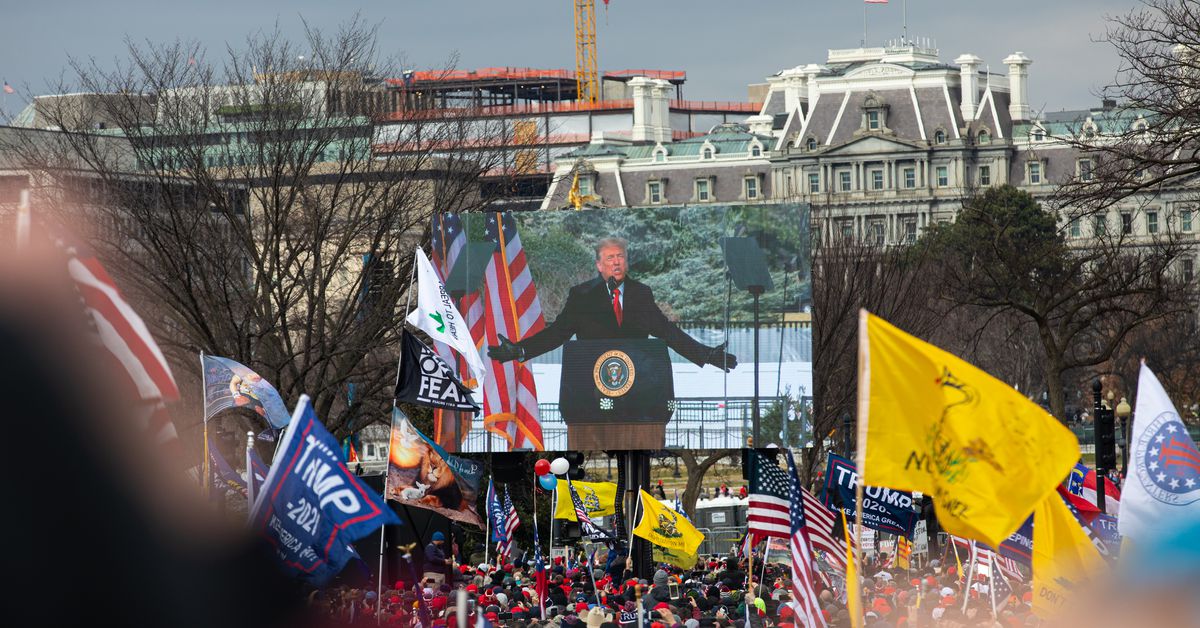An investigation by the Wall Street Journal found that several key allies of former President Donald Trump – including the right-wing media personality Alex Jones and Julie Jenkins Fancelli, heir to the Publix supermarket fortune – helped finance the demonstration that preceded the invasion of the United States Capitol on January 6 that left five dead.
According to reporters Shalini Ramachandran, Alexandra Berzon and Rebecca Ballhaus, Jones pledged $ 50,000 of his own money to the event and arranged additional funds, including a $ 300,000 contribution from Jenkins Fancelli, who is a major GOP donor.
In all, the rally cost about $ 500,000, according to the report. That event, during which Trump promised never to grant President Joe Biden the November election – and raised supporters who later took over the Capitol – formed the basis of Trump’s second impeachment in the House of Representatives. Partly due to comments made at that rally, Trump was accused of “inciting insurrection” and will soon face a Senate trial.
The Journal also reports that, according to Federal Electoral Commission records, “at least five former Trump campaign officials” were involved in the event’s logistics. The demonstration was particularly lucrative for Caroline Wren, a fundraising officer for Trump, who received $ 730,000 during the 2020 election cycle for her and her company to work on fundraising for Trump’s reelection campaign team from according to the Journal.
Jones, a prolific conspiracy theorist who helped promote many discredited claims, such as the idea that Sandy Hook’s massacre was a scam, pledged his funds in exchange for a lecture at the rally. He ended up speaking the night before, in a different rally, but promoted the event on January 6th. Both rallies were demonstrations of the “Stop the Steal” movement, which falsely claims that the presidential election was stolen from Trump.
Jenkins Fancelli’s donation was not connected to any speaking time and was administered by Wren, who Jenkins Fancelli allegedly selected to coordinate the rally. In addition to her contribution to the January 6 event, Jenkins Fancelli donated nearly one million dollars to the Trump campaign and the Republican Party during the 2020 election cycle.
Organized by a group calling itself “Women for America First”, the rally took place south of the White House, in an area known as Elipse, as Congressional legislators met on Capitol Hill to certify the results of that election. In his comments, Trump criticized Republicans he considered insufficiently loyal, including his own vice president, Mike Pence. He ended by encouraging the crowd to walk down Pennsylvania Avenue to directly challenge lawmakers.
That afternoon, hundreds of people had broken into the building, many waving pro-Trump flags, as well as other far-right emblems, such as the Confederate flag. Five people died during the chaos, including a policeman; two other policemen who were present that day died of suicide and at least 140 policemen were injured, some of them seriously.
Jones was not accused of transgression in connection, nor was Jenkins Fancelli.
Efforts to reverse the election have succeeded in activating Trump donors
The large sum of money raised for the January 6 rally is indicative of the fundraising effort that surrounded the final months of Trump’s presidency – overall, the former president’s opposition to the election results proved to be a lucrative opportunity of fundraising.
Indeed, Trump donors were motivated to contribute about $ 86 million to the Republican National Committee and organizations directly linked to Trump between November 24 and December 31, 2020, according to a statement on Friday with the Federal Electoral Commission.
Bloomberg reported for the first time that, according to WinRed, the Republican Party’s online fundraising arm, a total of $ 207 million was raised for Republican candidates and committees in the 19 days after the November 3 election. Part of that was for the competitive runoff elections for Georgia Senate seats, both of which the Republican Party lost.
But about $ 68 million raised went to Trump Make America Great Again, a joint fundraising committee that divides its fundraising between Save America, Trump’s political action committee, and the RNC, according to Bloomberg. As the Politico noted, Trump has great legal flexibility in how Save America’s money can be spent – from running ads in the upcoming elections to paying allies and family members for work.
While it remains unclear exactly how Save America’s money will be used, Trump is currently facing doubts about the ties to his reelection campaign with the January 6 rally. According to the Center for Responsive Politics, Trump’s 2020 re-election campaign paid more than $ 2.7 million to organizations and individuals linked to the January 6 event. A substantial amount of these donations were “dark money”, which makes it “difficult to know who the campaign paid for and when,” wrote reporter Anna Massoglia.
The Center for Responsive Politics also found that eight people were hired as employees or outsourced to organize the demonstration, using campaign funds. The campaign, however, said it did not pay for the rally and that these people were not employed for the campaign on the day of the rally and its violent outcome.
